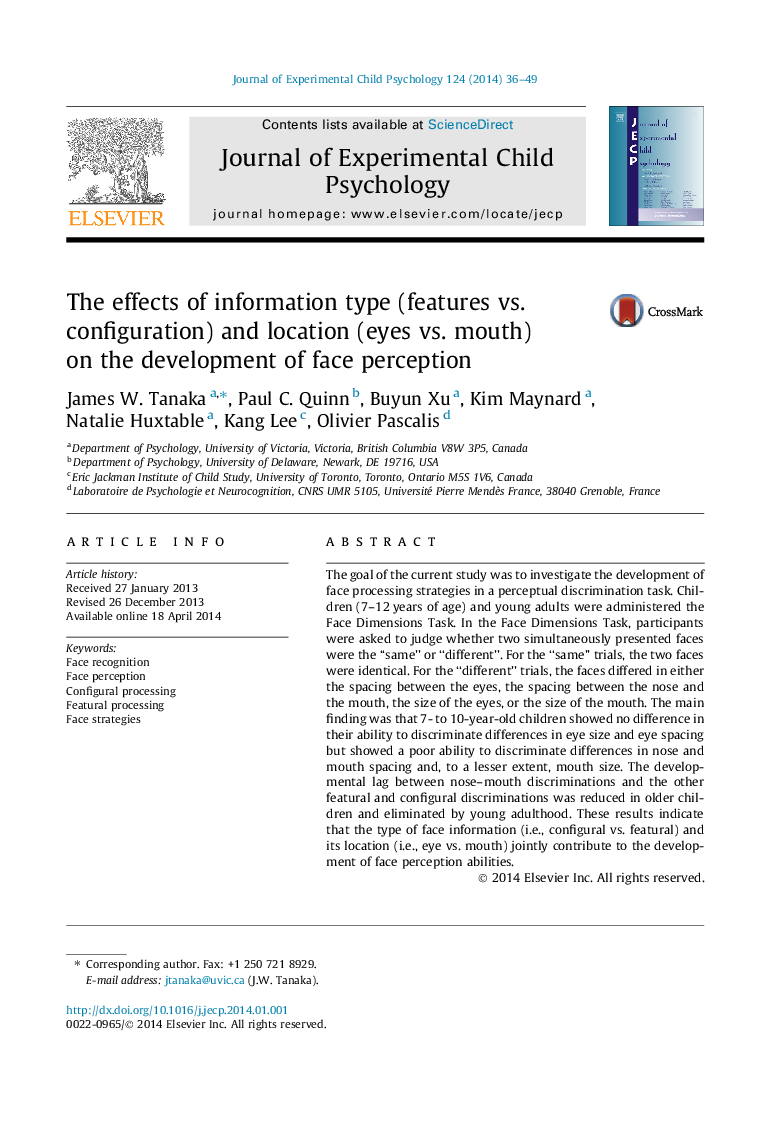| Article ID | Journal | Published Year | Pages | File Type |
|---|---|---|---|---|
| 918065 | Journal of Experimental Child Psychology | 2014 | 14 Pages |
•Young children are sensitive to the eye features and inter-ocular distance.•Older children and adults are sensitive to eye and mouth features and their distances.•Development of face perception is influenced by face location.
The goal of the current study was to investigate the development of face processing strategies in a perceptual discrimination task. Children (7–12 years of age) and young adults were administered the Face Dimensions Task. In the Face Dimensions Task, participants were asked to judge whether two simultaneously presented faces were the “same” or “different”. For the “same” trials, the two faces were identical. For the “different” trials, the faces differed in either the spacing between the eyes, the spacing between the nose and the mouth, the size of the eyes, or the size of the mouth. The main finding was that 7- to 10-year-old children showed no difference in their ability to discriminate differences in eye size and eye spacing but showed a poor ability to discriminate differences in nose and mouth spacing and, to a lesser extent, mouth size. The developmental lag between nose–mouth discriminations and the other featural and configural discriminations was reduced in older children and eliminated by young adulthood. These results indicate that the type of face information (i.e., configural vs. featural) and its location (i.e., eye vs. mouth) jointly contribute to the development of face perception abilities.
